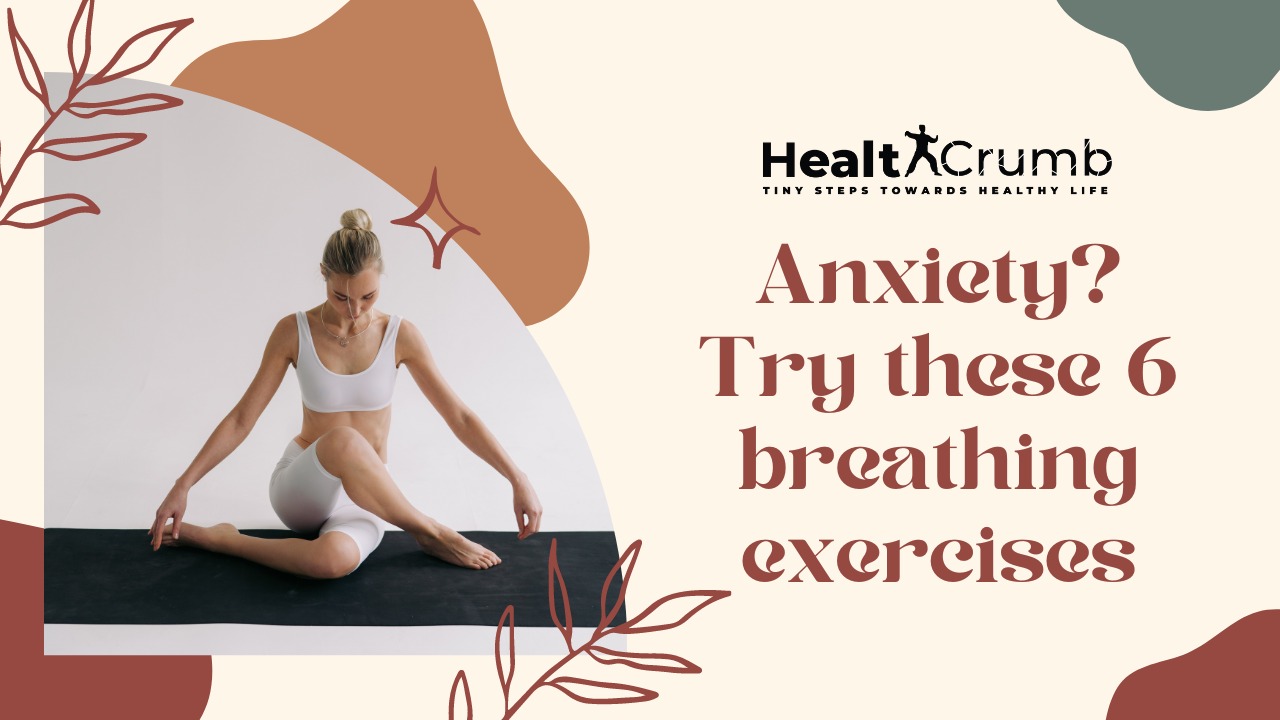Introduction
If you’re struggling with anxiety, know that you’re not alone because anxiety disorder is one of the most common mental disorders worldwide. While there is no one-size-fits-all solution to managing anxiety, there are some things that can help. Breathing exercises are a great place to start because an anxious person’s breathing becomes shallow and rapid, and this can lead to more anxiety and a feeling of being suffocated. But by focusing on your breath and taking slow, deep breaths, you can calm your nervous system and ease your anxiety. Here are six breathing exercises to try next time you’re feeling anxious.
What is anxiety?
Anxiety is feeling worried, nervous and uneasy. People diagnosed with anxiety may show physical symptoms such as a fast heart rate and sweating. They may also have trouble sleeping, feel dizzy, or have problems concentrating.
Anxiety disorders are different from normal anxiety. Anxiety disorders are long-lasting and can get worse over time. They can also lead to other problems, such as depression.
Anxiety disorders can vary differently, namely generalized anxiety disorder, social anxiety disorder, panic disorder, and even several types of phobias.
Why is anxiety caused?
- Anxiety is caused by a variety of factors, including genetics, brain chemistry, and life experiences.
- It can also be triggered by physical health problems, such as heart disease or thyroid problems.
- Stressful life events, such as divorce or the death of a loved one, can also lead to anxiety.
- People with anxiety often have trouble sleeping and may experience fatigue, irritability, and difficulty concentrating.
- Anxiety can also cause physical symptoms like sweating, racing heartbeat, and dizziness.
Symptoms of anxiety
Anxiety causes one’s body to go into fight-or-flight mode. This causes a surge in adrenaline and cortisol, and your heart rate and blood pressure increase. You may also feel shaky, sweaty, lightheaded, or have a racing heartbeat.
These physical symptoms can be overwhelming and make you feel like you’re in danger. But it’s important to remember that they’re just your body’s way of responding to stress.
Consequences of anxiety
Anxiety can have several negative consequences, both short- and long-term. In the short term, anxiety can cause difficulty concentrating, insomnia, and an increased heart rate.
In the long term, anxiety can lead to chronic health problems such as heart disease, high blood pressure, and gastrointestinal problems. Anxiety can also increase the risk of developing depression. It can also lead to digestive issues like nausea or diarrhea.
Anxiety can also cause people to avoid certain situations or activities, which can impact their quality of life. For example, people with anxiety may avoid social gatherings, public speaking, or flying.
There are several ways and treatments available to help to cope with anxiety. Some people may find relief with medication, while others may prefer to try relaxation techniques or therapy.
Some people may also find it helpful to make lifestyle changes, such as exercising regularly, eating a healthy diet, and getting enough sleep.
Another way to get rid of anxiety is through breathing exercises. Breathing exercises are a simple yet effective way to calm your nervous system and ease anxiety symptoms. Here are a few to try:
6 breathing exercises for anxiety
As you might be quite aware now, anxiety can prove to be a huge problem if not treated properly and on time. Therefore, it must be treated, even if you’re treating it with simple breathing exercises.
When it comes to anxiety, one of the best things you can do is focus on your breathing. Taking slow, deep breaths can help to calm your mind and body, and it’s a strategy that you can use anywhere, anytime.
If you’re feeling anxious, try these breathing exercises:
- Box breathing: This exercise is also sometimes called square breathing. To do it, breathe in for four counts, hold your breath for four counts, breathe out for four counts, and then hold your breath again for four counts. Repeat this cycle until you feel better and calmer.
- Balloon breathing: Imagine that you are inflating a balloon as you breathe in through your nose. Slowly exhale through your mouth, making an “O” shape with your lips. This should take longer than inhaling. Repeat this breathing exercise until you find yourself calming down and getting comfortable.
- 4-7-8 Breathing: Also known as the relaxation breath or the calming breath technique, this method involves counting as you breathe. Breathe in slowly through your nose and count to four, then hold your breath and count to seven. Exhale slowly through your mouth while counting to eight. Repeat the cycle up to four times, or until you feel yourself calm down from anxiety.
- Equal breathing: Also known as “square” or “box” breathing, this technique can help you control your breathing and slow your heart rate. To do equal breathing, sit up straight with your eyes closed and place your left hand on your stomach and your right one on your chest. Slowly inhale through your nose for a count of four. Feel your stomach rise as you breathe in. Hold your breath and count to four. Very slowly and gently exhale through your mouth while counting to four. Breathe out and feel your stomach fall as you do so. Repeat this pattern until you feel calm and comfortable.
- Diaphragmatic breathing: This type of breathing encourages deep abdominal breathing, which has been shown to reduce anxiety and improve sleep quality. To do diaphragmatic breathing, lie on your back with your knees bent and your feet flat on the floor. Slowly inhale through your nose, feeling your stomach expand as you breathe in. Hold your breath and count till three. Slowly exhale through your mouth, feeling your stomach contract as you breathe out. Repeat this pattern for 10 breaths, or until you feel like your breathing is back to normal and you feel calmer.
- Belly breathing: This breathing exercise is similar to diaphragmatic breathing, but it can be done while sitting or standing. To do belly breathing, place one hand on your stomach and the other on your chest. Slowly inhale through your nose, feeling your stomach expand as you breathe in. You should see your hand move out as you breathe in. Hold your breath while counting to three. Breathe out slowly through pursed lips, feeling your stomach fall as you breathe out. You should see your hand move in as you breathe out. Pursed lips help to control the rate of exhalation. Continue this breathing exercise until you feel that you’re calmer and at peace.
Practicing these 6 breathing exercises will help you reduce, and eventually overcome anxiety. Try these regularly whenever you feel anxious and uneasy.
Conclusion
If you or someone you know is struggling with anxiety, know that you’re not the only one. Millions of people around the world suffer from this condition, but there are things you can do to ease your symptoms. Breathing exercises are a simple and effective way to calm yourself amid an anxious episode. Next time you’re feeling panicked or overwhelmed, try one of these six breathing exercises and see how quickly your anxiety melts away.



